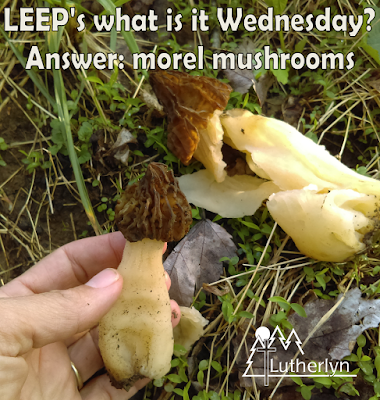Can
you identify what's in this photo?
Each Wednesday morning
on Camp Lutherlyn's Facebook page
the Lutherlyn Environmental
Education Program posts a photo.
Readers
have all morning and afternoon
to
make their best guess about what the photo is.
Around
6 pm LEEP provides the answer and a brief explanation.
Each
week's What is it Wednesday post
will
also be posted on the Nature of Lutherlyn blog,
after it is posted on Facebook,
sometimes
with additional bonus information.
In
addition to bringing you current editions of What is it Wednesday
on the
Nature of Lutherlyn blog,
we
will be reposting old editions,
creating
a What is it Wednesday archive.
This
photo was posted as a What is it Wednesday on
April 29, 2020.
And
the answer is....
This is the blossom of a flowering dogwood, just beginning
to open. Soon this blossom will transform into the familiar four-petaled white
flower that makes the flowering dogwood tree such a beautiful part of
springtime.
One neat thing about this picture is that the dogwood twigs
are visible as well as the blossom. Dogwood twigs are distinctive for a couple
of reasons. The branches of the twigs grow directly across from each other –
this is known as opposite branching pattern and very few tree species in our
area grow like this. Maples and ashes are the most common in addition to
dogwoods.
You can also see from a close look at dogwood twigs that
this is a very slow-growing tree. The small lines that encircle the twig mark the
ends of a year’s growth – on dogwood twigs these lines are very close together,
showing that they grow only about an inch a year, sometimes less.
Getting to know your natural surroundings can mean learning
what the flora and fauna look like in all their life stages, not just the
dominant or most familiar ones. Watch a plant up close for a whole year and see
what surprising things you notice!
Like and follow Camp Lutherlyn on
Facebook, to see What is it Wednesday posts when
they come out and have the opportunity to share your guesses in the comments!




















